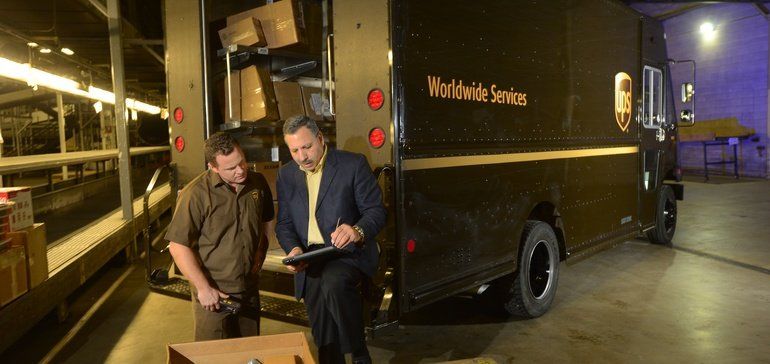UPS to team with tech firms for study on truck congestion
Dive Brief:
- UPS will team with a handful of tech companies — including Microsoft, Accenture, City Tech Collaborative, and HERE Technologies — for a four-month study in Chicago on the role delivery trucks play in the city’s traffic congestion, and to find possible solutions, reports the Chicago Tribune.
- In the study, HERE Technologies, which analyzes traffic data, will find places and times when congestion from delivery trucks worsens or when gridlock makes delivery more difficult.
- A second part of the study will involve a consumer survey to measure reactions to potential changes in delivery schedules. For example, if the study finds that a particular time of day for package delivery creates congestion, the consumer survey will measure how easy it will be to change delivery times.
Dive Insight:
Studies have shown that delivery trucks make up a disproportionate share
of congestion costs relative to the amount of vehicles on the road, a phenomenon that’s only gotten worse
as more customers turn to online shopping. The rise of contracted delivery that use personal vehicles rather than large trucks has also put more delivery traffic on crowded urban streets. A 2017 report from the supply chain firm MHI
projected that urban freight delivery would grow 40% by 2050, putting a burden on businesses to work on logistics to reduce congestion impacts.
Package firms have pushed back on the idea that they’re the sole cause of congestion. Tom Madrecki, director of urban innovation and mobility at UPS, previously told Smart Cities Dive
that "the actual cause of traffic in cities is single-occupancy personal vehicles, it is not commercial vehicles."
Companies have also tried to address their own role by taking steps like installing storage lockers that require only one stop to drop off multiple packages, or reaching agreements with ground-level small businesses to deliver multiple packages there. Some companies are even looking at electric-assist delivery bikes and delivery handcarts; the startup Nuro
is testing a self-driving delivery vehicle slightly smaller than a sedan.
The Chicago study, however, will give a broader view of how delivery and congestion feed each other, and how addressing both holistically can benefit consumers. The study will only look at one city, but the involvement of consumer surveys should ensure that any changes are widely applicable — and favored — across the industry.
